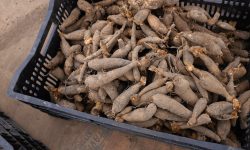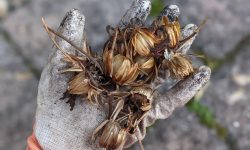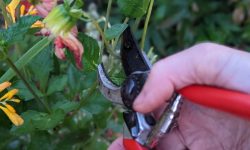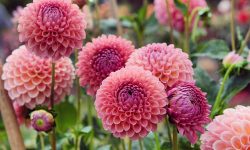Rose of Sharon is a stunning, versatile shrub valued for its abundant summer blooms. Proper pruning is essential to maintain its shape, encourage healthy growth, and maximize flowering. Many gardeners struggle to identify the optimal time and techniques for pruning, which can affect both plant vigor and bloom production. Understanding the correct methods ensures the shrub remains beautiful year after year.
Pruning Rose of Sharon at the right time and in the right way prevents damage to buds and stems. It also encourages strong, new growth that produces larger, more vibrant flowers. This guide provides expert tips, covering seasonal pruning, common mistakes, tools, and aftercare to help gardeners confidently maintain Rose of Sharon and enjoy spectacular blooms throughout the season.
Understanding Rose of Sharon Growth

Growth Patterns and Bloom Cycle
Rose of Sharon is a vigorous, deciduous shrub known for its rapid growth and abundant summer flowers. Typically, it reaches heights of 8 to 12 feet with a naturally bushy shape created by multiple stems emerging from the base. Flowers appear on new growth, which makes understanding its bloom cycle essential for proper pruning. Removing stems at the wrong time can eliminate buds, reducing the number and quality of flowers in the upcoming season. Regular observation of growth patterns helps gardeners identify which stems to prune and which to preserve for optimal flowering.
The plant thrives in full sun but also tolerates partial shade. Healthy growth depends on adequate water, nutrients, and proper soil conditions. Leaves should be vibrant and free of disease or pests to support flower development. By paying close attention to growth stages, gardeners can plan pruning to enhance the shrub’s structure and bloom potential. Proper timing ensures that each pruning session encourages strong, new shoots capable of producing lush, vibrant flowers while maintaining the natural form of the shrub.
Seasonal Growth Considerations
Rose of Sharon exhibits distinct seasonal growth patterns that affect pruning decisions. In spring, the shrub produces vigorous shoots and abundant foliage. Summer brings the flowering period, with blooms appearing on new stems formed earlier in the growing season. These seasonal differences mean that pruning at the wrong time can remove potential flowers or stimulate growth that may be damaged by frost.
Monitoring these growth phases is key. Late summer or early fall pruning can encourage new shoots that are vulnerable to cold, while winter pruning focuses on dormant wood without affecting flowering. Understanding these dynamics helps gardeners time their pruning to minimize stress on the plant and maximize bloom production. Consistent care and awareness of seasonal growth ensure a healthy, well-structured shrub with abundant, long-lasting flowers each summer.
Preparing for Pruning
Proper preparation is essential before cutting back Rose of Sharon. Begin by assessing the shrub for dead, diseased, or damaged branches. Removing these improves air circulation, reduces the risk of pests and diseases, and allows sunlight to reach interior stems. Clean, sharp tools are critical to make precise cuts that do not crush stems or create entry points for pathogens.
Preparation also involves understanding the plant’s natural shape and identifying which stems are most likely to produce flowers. Maintaining a balance between removing old or overcrowded wood and preserving healthy, flowering branches ensures the shrub remains attractive while supporting future blooms. By taking the time to plan cuts strategically, gardeners create a strong foundation for effective pruning and long-term plant vitality, leading to healthier growth and more abundant flowering in the coming seasons.
Best Time to Prune Rose of Sharon
Timing for Maximum Blooms
Pruning Rose of Sharon at the correct time is crucial to ensure abundant flowering. The optimal period is immediately after the shrub finishes blooming, usually in late summer. This allows gardeners to remove spent flowers and old wood without cutting off buds that will produce the next season’s blooms. Pruning too early in spring can eliminate flower buds, resulting in fewer blossoms and a less vibrant display.
By observing the flowering cycle carefully, gardeners can determine when blooms are complete and stems are ready for pruning. Cutting at this time encourages strong, new growth that will support flowers in the following season. Proper timing not only enhances bloom quantity but also improves the plant’s overall health. Gardeners who consistently prune at the correct stage can enjoy full, colorful blooms each summer while maintaining a well-structured shrub.
Avoiding Frost and Seasonal Risks
Late-season pruning can be risky if done too close to the first frost. New shoots stimulated by pruning may not have time to harden off and could suffer frost damage. This weakens the plant and reduces flower production for the next year. Early pruning in spring, on the other hand, may remove essential buds formed the previous year, again limiting blooms.
Understanding local climate conditions is vital for timing pruning accurately. Gardeners should monitor frost dates, seasonal temperatures, and growth patterns to decide the safest pruning window. Choosing a time that avoids both extreme heat and cold ensures the plant recovers quickly. This careful approach supports vigorous growth, promotes healthy stems, and preserves flower buds, allowing the shrub to bloom consistently without stress or damage.
Planning Pruning Around Growth Stages
Rose of Sharon’s growth cycle should guide pruning decisions. Early-season shoots are delicate and susceptible to damage, while mid-to-late-season stems have matured enough to withstand cutting. By planning pruning around these stages, gardeners can remove old or weak branches while preserving strong, flower-producing stems.
Assessing the shrub before pruning ensures a balance between cutting old wood and maintaining healthy stems for blooms. Strategically planning pruning sessions also helps shape the plant, prevent overcrowding, and improve airflow, which reduces disease risk. Following these growth-based guidelines allows gardeners to maintain a healthy, visually appealing shrub while maximizing the quantity and quality of flowers each year.
Tools Needed for Safe Pruning
Pruning Rose of Sharon effectively requires the right tools. Sharp, clean cutting instruments reduce damage to branches and minimize stress on the shrub. Bypass pruners are ideal for small to medium stems, providing clean cuts that heal quickly. For larger branches, a pruning saw is essential, as it allows precise removal without splintering wood. Using the proper tools ensures cuts are accurate, promoting faster recovery and healthier growth.
Sterilizing tools before and after pruning is equally important. Pathogens and fungal spores can spread from one plant to another if tools are contaminated. Wiping blades with rubbing alcohol or a bleach solution prevents infection and protects the entire garden. Maintaining tool sharpness not only improves cut quality but also reduces the effort required during pruning. Dull or dirty tools can crush stems, creating open wounds susceptible to disease.
Additional tools can enhance the pruning process. Gloves protect hands from scratches and thorns, while a ladder may be needed for taller shrubs. Rakes and pruning shears help clean up debris, reducing the risk of pests and disease. Preparing all tools in advance saves time and ensures pruning is efficient and safe. By investing in proper, well-maintained equipment, gardeners create optimal conditions for healthy cuts, supporting vigorous growth and abundant blooms for the next season.
How to Cut Back Rose of Sharon Correctly
Cutting back Rose of Sharon requires careful attention to timing and technique. Begin by removing dead, diseased, or damaged branches first. This step improves air circulation, reduces the risk of pests and disease, and allows sunlight to reach interior stems. Always aim for clean cuts at a slight angle, just above a healthy bud or lateral branch. This encourages new growth in the desired direction while maintaining the natural shape of the shrub.
Next, thin overcrowded branches to prevent tangling and improve airflow. Overcrowded stems can compete for nutrients and light, which reduces flowering potential. Focus on preserving strong, healthy branches that are most likely to produce blooms. Avoid cutting more than one-third of the shrub at a time, as excessive removal stresses the plant. By balancing thinning with selective pruning, gardeners promote vigorous growth while retaining the shrub’s overall structure and aesthetic appeal.
Finally, shape the shrub according to its natural form and your landscape design. Trim overly long branches to maintain symmetry and proportion, guiding growth without creating an artificial appearance. Pay attention to how cuts will influence future blooms, preserving branches that will bear flowers next season. Combining careful removal, thinning, and shaping ensures a healthy, well-structured plant that produces abundant, vibrant flowers. Proper cutting techniques safeguard the shrub’s health while maximizing the number and quality of blooms for years to come.
Encouraging New Growth After Pruning
After pruning Rose of Sharon, encouraging healthy new growth is essential for abundant flowering. The shrub responds best when the cuts are clean and strategically placed, removing only old or damaged stems while preserving strong, healthy branches. This directs energy into developing fresh shoots capable of producing vibrant blooms in the next season. Observing the plant’s natural growth patterns helps gardeners target branches that will most benefit from stimulation.
Providing proper care immediately after pruning supports recovery and growth. Water consistently to keep the soil evenly moist but avoid overwatering, which can lead to root rot. Applying a balanced fertilizer, rich in phosphorus, promotes root and bud development, giving the plant the nutrients needed to generate strong stems. Mulching around the base conserves soil moisture, moderates temperature, and suppresses competing weeds, further enhancing the environment for new growth.
Monitoring the plant over the following weeks ensures that shoots develop properly. Remove any emerging weak or diseased stems promptly to maintain vigor. Training longer stems along supports or within the shrub’s framework encourages a balanced structure, improving light penetration and airflow. Combining strategic pruning, consistent watering, fertilization, and careful observation maximizes the shrub’s potential for robust growth and abundant blooms. Gardeners who follow these steps ensure Rose of Sharon thrives season after season with vibrant, long-lasting flowers.
Caring for Rose of Sharon After Cutting Back
Proper care after cutting back Rose of Sharon is critical to support recovery and future flowering. Immediately after pruning, water the shrub thoroughly to settle the soil and reduce stress. Maintain consistent moisture, ensuring the soil is damp but not waterlogged. Overwatering can cause root rot, while underwatering slows recovery. Regularly monitor soil conditions and adjust irrigation as needed to support healthy new growth.
Fertilization also plays a key role in post-pruning care. Applying a balanced, slow-release fertilizer rich in phosphorus and potassium encourages strong stems and flower bud formation. Avoid excessive nitrogen, which promotes leafy growth at the expense of blooms. Mulching around the base helps retain moisture, regulates soil temperature, and suppresses competing weeds. This creates an optimal environment for the shrub to rebuild its energy reserves and develop vigorous shoots for the next flowering season.
In addition to watering and feeding, monitor the plant for pests and diseases. Newly pruned stems are more susceptible to infestations, so inspect regularly for aphids, mites, or fungal infections. Remove any affected growth promptly and consider organic treatments if necessary. Supporting the shrub with stakes or trellises for taller branches may also help prevent damage from wind or heavy blooms. By combining proper watering, fertilization, pest management, and structural support, gardeners ensure Rose of Sharon recovers quickly, producing lush, healthy foliage and vibrant blooms in the following season.
Pruning Young vs. Mature Rose of Sharon
Pruning Young Rose of Sharon
Pruning young Rose of Sharon shrubs is essential for establishing a strong, healthy structure that will support abundant blooms in the future. During the first few seasons, focus primarily on shaping rather than heavy cutting. Remove any weak, damaged, or crossing branches to encourage a balanced framework. Properly spaced branches allow light and air to penetrate, reducing the risk of disease while supporting vigorous growth. This early training is crucial for guiding the natural form of the shrub and preventing overcrowding, which can hinder flower production as the plant matures.
Light pruning also helps stimulate lateral growth, creating multiple strong stems that form a naturally bushy appearance. Avoid removing too much foliage, as young plants rely on leaves for photosynthesis to develop roots and overall vigor. Regular observation allows gardeners to make minor adjustments, trimming selectively to enhance symmetry while preserving potential flower buds. By giving attention to shaping and health during the formative years, young Rose of Sharon shrubs develop a solid framework. This careful approach ensures long-term beauty, robust growth, and a steady increase in flower production as the plant matures, minimizing maintenance needs in later years.
Pruning Mature Rose of Sharon
Mature Rose of Sharon shrubs benefit from strategic pruning to maintain health, structure, and flowering performance. At this stage, focus on removing older, crowded, or unproductive branches to enhance airflow and sunlight penetration throughout the plant. Cutting back up to one-third of the oldest wood stimulates vigorous new growth and encourages flower production on fresh stems. Proper thinning reduces shading within the shrub, preventing weak growth and improving overall bloom quality.
In addition to thinning, shaping is critical for mature plants to maintain visual appeal and prevent excessive spreading. Avoid heavy, drastic cuts that remove too much foliage at once, as this can stress the shrub and reduce flowering for the season. Regular, careful pruning helps maintain symmetry and encourages balanced growth while supporting the plant’s natural flowering cycle. Thoughtful maintenance ensures mature Rose of Sharon remains vigorous, healthy, and capable of producing vibrant, abundant blooms year after year, creating a striking focal point in the garden while minimizing the risk of disease and structural imbalance.
Rejuvenation Pruning for Old Rose of Sharon
Rejuvenation pruning is essential for older Rose of Sharon shrubs that have become overgrown or unproductive. Start by removing dead, diseased, or damaged wood, cutting back to healthy tissue. This not only improves the plant’s appearance but also stimulates new growth from the base. Removing older, unproductive stems encourages the shrub to redirect energy into producing fresh shoots, which will bear more abundant and vibrant blooms.
Next, selectively cut back thick, tangled branches that block light and airflow. Older shrubs often develop a dense center that limits sunlight to interior branches, reducing flower production. Thinning out these areas improves air circulation, helping prevent fungal diseases and promoting uniform growth. Avoid removing more than one-third of the plant at a time to prevent excessive stress. Gradual rejuvenation allows the shrub to recover quickly and encourages multiple strong stems to form, creating a more balanced structure for future flowering.
Finally, follow up with proper care after rejuvenation pruning. Water consistently to support root and shoot development, and apply a balanced fertilizer to supply essential nutrients. Mulch around the base to retain moisture, regulate temperature, and reduce weed competition. Regular monitoring for pests and diseases ensures that the plant remains healthy as it recovers. With careful rejuvenation pruning and attentive post-pruning care, even old Rose of Sharon shrubs can regain vigor, produce lush new growth, and deliver stunning blooms year after year.
Pruning to Control Rose of Sharon Size
Pruning Rose of Sharon to control its size is essential for maintaining a tidy, manageable shrub while encouraging healthy growth. Begin by assessing the plant’s overall structure and identifying branches that extend beyond the desired height or width. Focus on removing long, unruly stems while preserving the main framework to maintain a balanced shape. Strategic pruning prevents the shrub from overtaking garden spaces and allows sunlight and air to penetrate evenly throughout the plant.
When reducing size, avoid cutting excessively or all at once, as this can stress the shrub and reduce flowering potential. Instead, trim back selectively, removing no more than one-third of the plant in a single session. This gradual approach ensures that the plant recovers quickly and produces new growth that will support abundant blooms. Pay attention to the natural shape of the shrub, maintaining its rounded or vase-like form to enhance visual appeal while controlling its spread.
In addition to controlling height and width, size pruning helps maintain overall health. Overgrown shrubs are prone to weak, crowded branches that are susceptible to pests and diseases. Removing excess growth encourages stronger stems and improves flower production. Combine size management with proper watering, fertilization, and post-pruning care to ensure the shrub remains vigorous. Regular, thoughtful pruning keeps Rose of Sharon visually appealing, well-structured, and full of vibrant blooms year after year, creating a beautiful and functional landscape feature.
Common Mistakes to Avoid When Pruning Rose of Sharon
Pruning Too Early or Too Late
One of the most common mistakes gardeners make with Rose of Sharon is pruning at the wrong time. Pruning too early in spring can remove developing flower buds, resulting in a season with fewer or no blooms. The shrub invests energy into producing new growth prematurely, which weakens its overall health and reduces flowering potential. On the other hand, pruning too late in fall or early winter leaves the plant little time to recover before entering dormancy. This can stress the shrub, cause reduced vigor, and make it more susceptible to diseases or frost damage.
The ideal timing for pruning is immediately after the primary flowering period, typically in late summer or early fall. This allows the shrub to maintain a neat, attractive shape while giving new shoots enough time to develop before winter. Careful observation of the bloom cycle ensures that pruning enhances structural growth without compromising flower production. By avoiding hasty or delayed cuts, gardeners protect the shrub’s vitality, ensure consistent bloom cycles, and maintain long-term visual appeal in the landscape.
Cutting Too Much Foliage
Removing excessive foliage at once is another frequent error. Cutting back too many branches reduces the plant’s ability to photosynthesize, limiting energy for root development, stem growth, and flower production. Over-pruning can leave Rose of Sharon weak, causing yellowing leaves, delayed bud formation, and slow recovery. In extreme cases, the plant may develop fewer blooms for multiple seasons.
A practical approach is never to remove more than one-third of the shrub’s total branches in a single session. Focus on cutting dead, diseased, or overcrowded stems while leaving healthy leaves intact. For extensive shaping, divide the pruning into several lighter sessions throughout the season. This allows the plant to recover gradually, maintaining strength and vigor. Careful, measured pruning ensures that the shrub continues to grow robustly, producing abundant flowers year after year. Gradual shaping also enhances the plant’s natural form and keeps it visually appealing while minimizing stress.
Using Dull or Dirty Tools
Using dull or unsanitized pruning tools is a critical mistake that can severely damage Rose of Sharon. Dull blades crush stems rather than creating clean cuts, slowing healing and making the plant vulnerable to infection. Similarly, dirty tools may transfer bacteria, fungi, or viruses from other plants, increasing the risk of disease and potentially affecting the entire garden.
To prevent these issues, always use sharp, high-quality pruners or shears. Sterilize tools with alcohol or a disinfectant solution before and after use to eliminate pathogens. Sharp, clean cuts heal faster, reduce stress on the plant, and minimize the chance of fungal or bacterial invasion. Proper tool maintenance is crucial not only for healthy pruning but also for ensuring the long-term vitality of the shrub. Combining careful cutting techniques with sanitized tools allows Rose of Sharon to recover quickly, maintain strong growth, and produce vibrant blooms season after season.
Designing with Rose of Sharon in Different Garden Styles
Rose of Sharon is a versatile shrub that can enhance a variety of garden designs, from formal landscapes to cottage-style settings. Its upright growth, vibrant blooms, and long flowering period make it an ideal focal point or background plant. In formal gardens, plant Rose of Sharon in symmetrical arrangements or along pathways to create structure and visual rhythm. The colorful flowers add seasonal interest and can complement neatly trimmed hedges or classic garden ornaments. Proper spacing ensures each shrub develops fully while maintaining the desired shape, preventing overcrowding and promoting healthy growth.
In more informal or cottage gardens, Rose of Sharon works beautifully when mixed with other flowering shrubs and perennials. Its natural, slightly untamed form adds texture and depth, while the blooms provide contrast with softer foliage plants or perennial flowers. Grouping shrubs in clusters creates a naturalized look that encourages pollinators and enhances biodiversity. The shrub’s adaptability allows it to thrive alongside a variety of companion plants, creating harmonious color combinations and layered heights.
Rose of Sharon is also effective in privacy screens or mixed borders, offering both beauty and function. Its dense foliage provides shelter for birds and insects, while the flowers attract pollinators throughout summer. Selecting cultivars with different flower colors allows for continuous visual interest. Integrating Rose of Sharon thoughtfully within different garden styles maximizes its ornamental value, ensuring a vibrant, dynamic, and ecologically supportive landscape that blooms year after year.
FAQ About When to Prune Rose of Sharon
What is the best time of year to prune Rose of Sharon?
The optimal time to prune Rose of Sharon is immediately after its main flowering season, typically late summer. Pruning at this time ensures that you do not remove developing buds, maintains the shrub’s shape, and allows new growth to establish before winter dormancy.
How much of the shrub should be pruned at once?
It is recommended to remove no more than one-third of the shrub at a time. Excessive pruning can stress the plant, reduce flowering, and slow recovery. Gradual, selective pruning of dead, damaged, or overcrowded branches promotes healthy growth and abundant blooms year after year.
Should I prune young and mature Rose of Sharon differently?
Yes. Young shrubs require minimal pruning to shape and encourage branching, while mature shrubs benefit from selective thinning to remove old or crowded branches. Tailoring pruning to plant age ensures vigorous growth, prevents overcrowding, and maximizes flower production across different life stages.
Can I use any tools for pruning Rose of Sharon?
Only clean, sharp pruners or shears should be used. Dull or dirty tools can crush stems, slow healing, and spread disease. Sterilizing tools before and after use prevents infection and ensures healthy cuts, promoting faster recovery and consistent flowering.
How do I encourage new growth after pruning?
Provide proper post-pruning care, including regular watering, balanced fertilization, and mulching. Removing spent blooms and thinning branches improves air circulation and sunlight exposure. These practices stimulate healthy shoot development and help the shrub produce more vibrant flowers during the next blooming season.
Conclusion
Pruning Rose of Sharon correctly ensures vibrant blooms, strong growth, and a healthy, well-shaped shrub year after year. Understanding the right timing, proper techniques, and age-specific approaches prevents common mistakes that can reduce flowering or weaken the plant. Regular maintenance, careful post-pruning care, and attention to environmental needs enhance overall plant vigor. By combining strategic pruning with thoughtful garden placement, you can enjoy consistent, colorful blooms while keeping the shrub attractive and manageable. Mastering these practices transforms Rose of Sharon into a long-lasting, stunning feature in any landscape.






